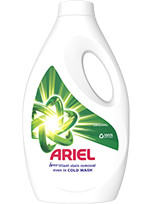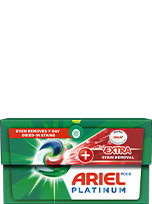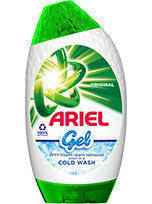The mineral content of your water can affect the way you wash your clothes.
Washing in hard water can leave mineral deposits behind on your clothes that can cause soiling to build up on your clothes and also cause your whites to look dingy. The good news is you can still get great laundry results, because it doesn’t matter where your area sits on the water hardness scale. Read on to learn all about hard water, how it affects your clothes and what measures you can take to overcome any laundry challenges that come from living in a hard water area.
What is hard water?
Hard water is when the natural water in your area contains a high mineral content, including minerals like calcium and magnesium. Since water can dissolve materials, water picks up mineral particles from the rock and soil it comes in contact with. If you live in an area that’s high in chalk, for example, your water is likely to contain high levels of calcium, which makes the water in your area hard. Soft water means your water supply only contains trace amounts of these minerals and is unlikely to affect your laundry. Water hardness varies throughout the country. Take a look at this map to see if you live in a hard water area:
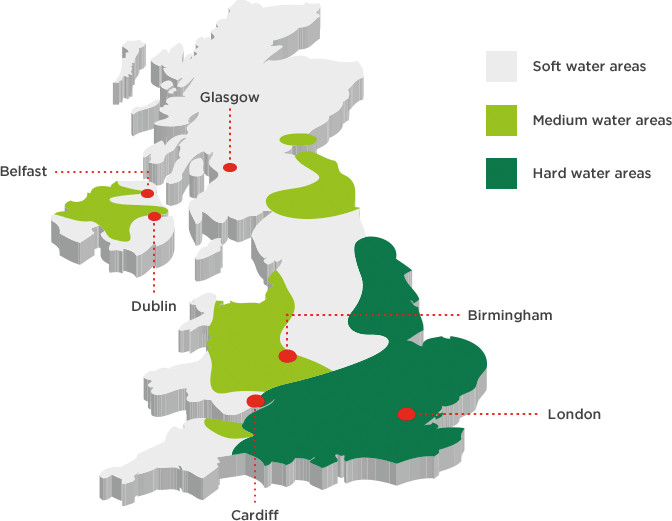
Don’t worry if you live in a hard water area. Read on to find out what you can do.
How does water hardness affect my laundry?
You can think of water hardness as a tough stain that interacts with the ingredients in your washing detergent, and stops your detergent from working effectively. When washing with hard water, good detergents include extra ingredients that soften the water so the rest can get to work removing the real stains. This is why you’ll need to use more detergent to soften the water if you live in a hard water area. Some of the most common laundry problems you may encounter when you live in a hard water area are:
Dingy whites or garments coming out with a grey or yellow hue.
Stiff and harsh feel in your fabrics.
Soil build up in your clothes.
White or grey streaks appearing on your coloured and dark garments.
Weakened fibres that are easily torn.
How can I test the hardness of my water?
If you’re still not sure if you live in a hard or soft water zone, you can keep an eye out for signs of water hardness at home. You may have hard water if you notice:
Spots or a filmy layer on your dishes.
Soap and shampoo don’t lather much or at all.
A ring around the inside of your bathtub.
Faucets, drains and showerheads have limescale − an accumulation of white crusty or chalky deposits that are hard to clean off.
You have dry, itchy skin.
Your clothes feel stiff when they come out of the wash.
If you notice any of these, you could do this hard water test:
Fill an empty, clear, and clean bottle with water from your tap until it’s about a third full.
Add a few drops of liquid soap.
Close the bottle’s cap securely.
Shake the bottle vigorously for a few seconds.
Check the water. Cloudy, milky-looking water without bubbles indicate your water is hard while lots of bubbles on top with clear water at the bottom mean you live in a soft water area.
What can I do if I live in a hard water area?
When it comes to washing your clothes, there is no need to look for a washing detergent that is designed specifically for hard water. A good detergent will come with ingredients that work to soften the water and will allow for the rest of the detergent to get to work. All detergents are suitable for all levels of water hardness − only the dosage needs to be adjusted as hard water will need more detergent to help soften it first before getting to work. This is why using a higher dose of laundry detergent for hard water will not only clean your clothes better, but will also help prevent the build up of dirt and mineral deposits in your washing machine. See the table below for dosing guidelines for the different water hardness levels so you get the best out of your detergent.
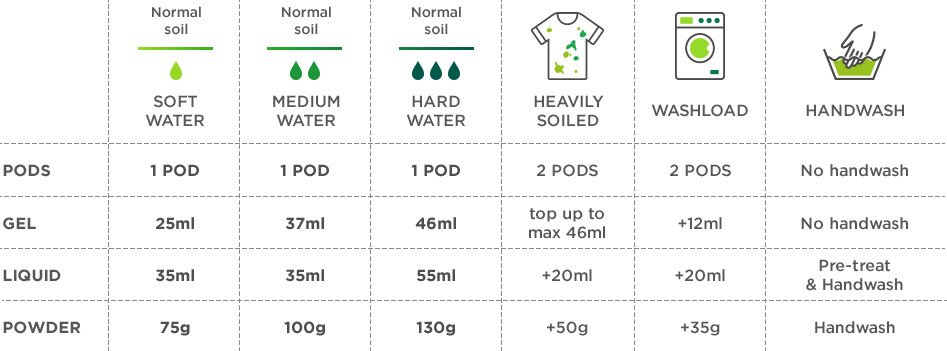
No matter the water, Ariel will give you outstanding results from the first wash.

